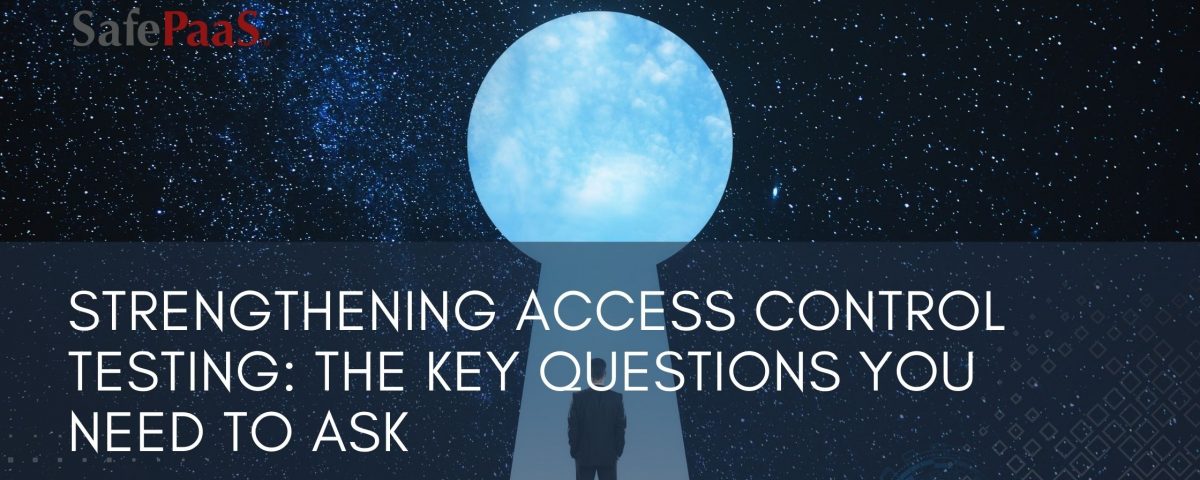Strengthening Access Control Testing


Strengthening Access Control Testing:
The Key Questions You Need to Ask
Make no mistake: businesses are under attack. There is an increasing gap between objectives and execution when it comes to securing our organizations, and access governance along with effective access control testing play a pivotal role in bridging this divide by mitigating risks associated with technology implementations, enhancing security, and streamlining processes through automation.
However, establishing a comprehensive and cohesive access governance framework can be challenging, and many organizations struggle to address the gaps in their security strategies.
To assist your organization in navigating lifecycle management challenges, we've compiled a list of ten key questions that can serve as your compass. Answering these questions will illuminate various aspects of your access governance strategy, allowing you to strengthen your organization's defenses and maintain the highest security and compliance standards.
1. What is your process to validate user identities before access provisioning?
- Why is it essential? Ensuring that only authorized users gain access is the first defense against security breaches.
- What it accomplishes: Verifying user identities enhances security and compliance, minimizing the risk of unauthorized access. This process also establishes a full audit trail for tracking access, ensuring accountability and evidence in case of security incidents or compliance audits.
2. Who is involved in the access authorization process?
- Why is it essential? Clarity in authorization responsibilities establishes accountability and oversight in access management.
- What it accomplishes: Knowing who authorizes user access streamlines the process and ensures compliance with your established policies. It also fosters a culture of responsibility and oversight, which is essential for maintaining the integrity of the access management system.
3. Can you define your user access provisioning process?
- Why is it essential? Understanding how access is granted promotes transparency and reduces the risk of errors or oversights.
- What it accomplishes: Transparency in provisioning ensures access is provided consistently and standardized, reducing the potential for errors or oversights. It also aids in demonstrating compliance with regulatory requirements by providing a clear picture of the access provisioning process.
4. How are your application access controls managed?
- Why is it essential? A structured approach to access control delegation aligns access with business and compliance requirements.
- What it accomplishes: Effective management of access controls ensures that only the right individuals have access to specific applications, aligning access with business and compliance requirements. This approach helps maintain the security and confidentiality of sensitive data within these applications.
5. How are super user activities monitored and alerted if access is provisioned outside the process?
- Why is it essential? Detecting potential breaches and misuse enhances overall security.
- What it accomplishes: Timely alerts enable swift action to mitigate security risks and protect sensitive information. It also provides evidence of due diligence in monitoring and responding to super-user activities, which is essential for maintaining the security and compliance of the system.
6. How do you verify that the user cannot access your system once access is terminated?
- Why is it essential? Revoking access for former employees is vital in preventing unauthorized access post-termination.
- What it accomplishes: Swift access revocation reduces security risks and potential data breaches by ensuring former employees cannot access the system. This process also provides evidence of compliance with data security and privacy regulations, which can be crucial in audits or legal matters.
7. How do you ensure access is approved before it is provisioned?
- Why is it essential? Proper authorization and validation ensure compliance with security policies.
- What it accomplishes: Access approval before provisioning minimizes the risk of unauthorized access and maintains compliance standards, establishing a strong foundation for an auditable access control framework. This process also ensures that access rights are granted following established policies.
8. How frequently do you perform user access reviews and maintain segregation of duties?
- Why is it essential? Regular reviews ensure that access aligns with current job roles and duties.
- What it accomplishes: Frequent reviews and segregation of duties maintenance prevent conflicts, fraud, and unauthorized access. It also provides documentation of ongoing compliance efforts, which is invaluable for audits and regulatory requirements.
9. What is the procedure to revoke an employee's access who is terminated or leaves the organization?
- Why is it essential? A clear process for access revocation upon employee departure is critical for data security.
- What it accomplishes: Streamlined procedures ensure access is promptly revoked, reducing security risks by preventing unauthorized access by departing employees. It also demonstrates a commitment to safeguarding sensitive data and controlling access rights.
10. How do you track access changes or updates, and can you provide evidence that all access change requests are appropriately approved?
- Why is it essential? Monitoring access changes and approvals is crucial for compliance and security.
- What it accomplishes: An audit trail provides evidence that access changes are appropriately approved and controlled, essential for maintaining a secure and compliant access management system. It also facilitates investigations, compliance audits, and security incident responses by offering a clear record of access changes and approvals.
The need to strengthen access governance is evident in today's cybersecurity threatscape, where your business faces constant risks. A strong policy-based access governance solution, equipped with fine-grained capabilities, achieves the critical objectives of enhanced security and compliance, clarity in authorization processes, transparency, business alignment, timely breach detection, access revocation, access approval, regular reviews, streamlined procedures, and an audit trail for access changes.
Your organization can address these key access questions and implement a framework to fortify its defenses against evolving cyber threats, safeguard sensitive data, and demonstrate a commitment to security, compliance, and system integrity. Access governance is the key to a secure and resilient future for your organization.
Recommended Resources

Access Governance vs Access Management
Access Governance and Access Management are pivotal in your organization's security and data integrity objective. Access Management safeguards your digital resources by controlling who has access to what. Access Governance orchestrates policies, compliance, and risk management to ensure access control serves your organization's best interests.

How Access Governance fits into Cyber Security
Cyber threats are omnipresent, and data breaches have become a common headline. Effective access governance is indispensable for strengthening an organization's cybersecurity posture. To confront this challenging threatscape, your organization must implement strong access governance strategies and fortifications for enhancing and maintaining cybersecurity.

Locking down Access Controls
By streamlining access control across the IT landscape, organizations can boost operational efficiency and ensure ongoing compliance, saving time and reducing costs. As your business grows, looking for a scalable solution that can grow with you is pivotal.

